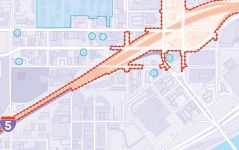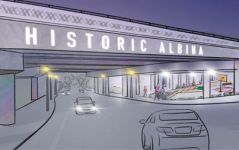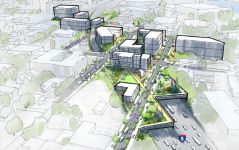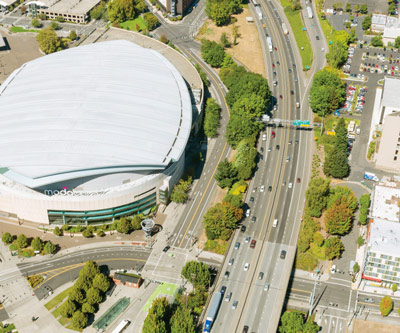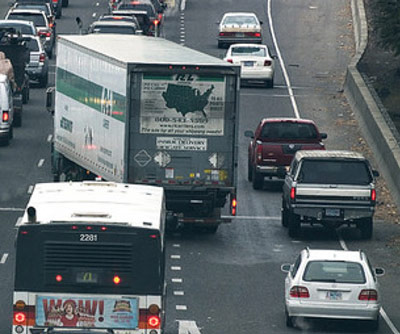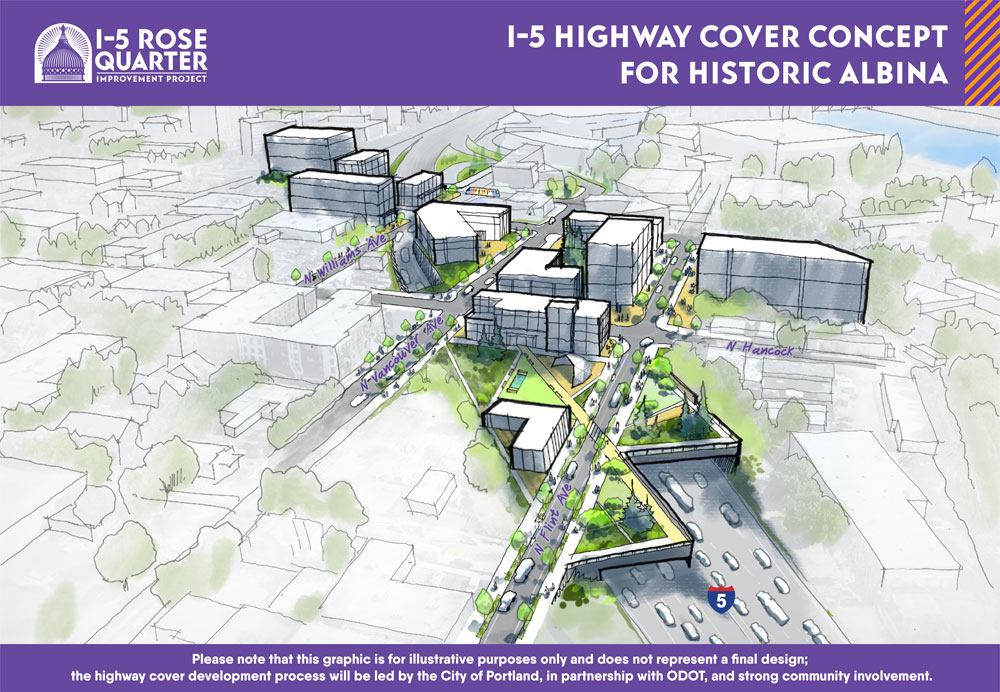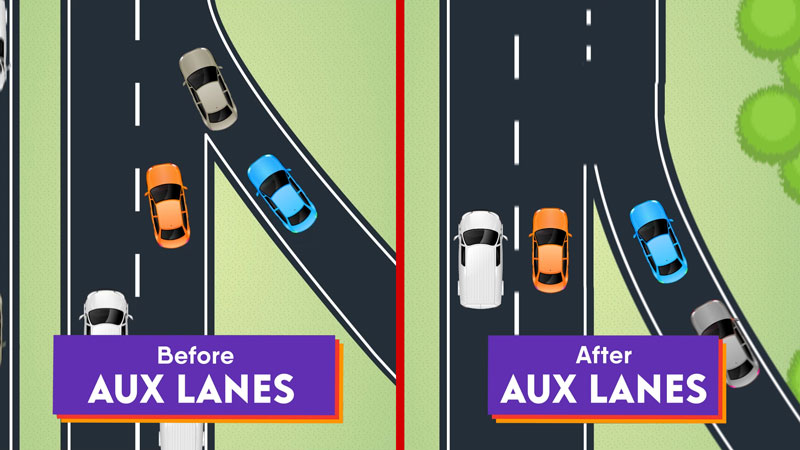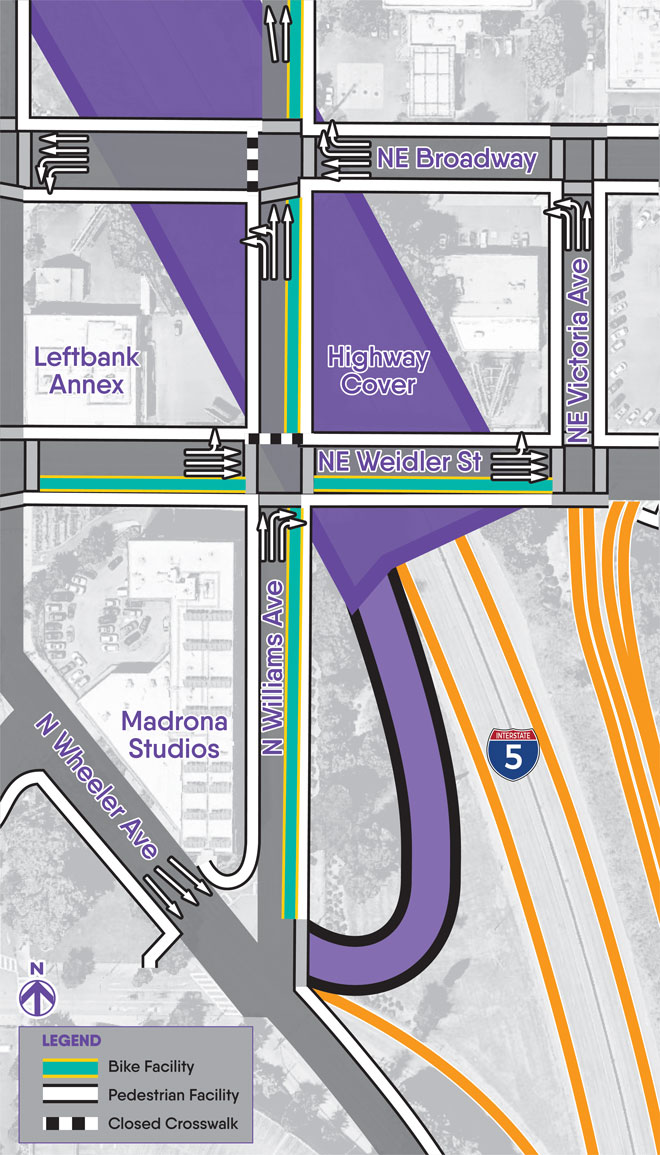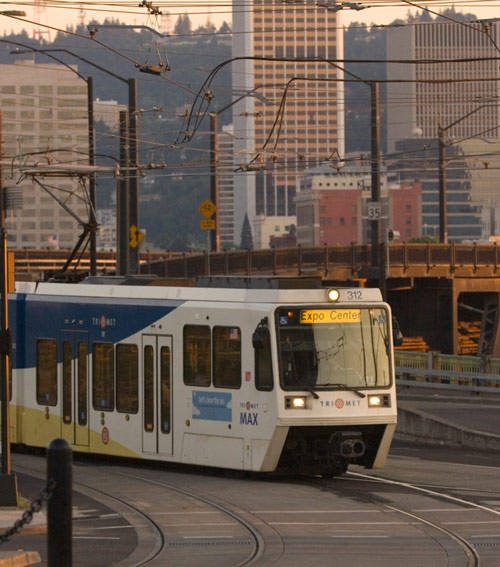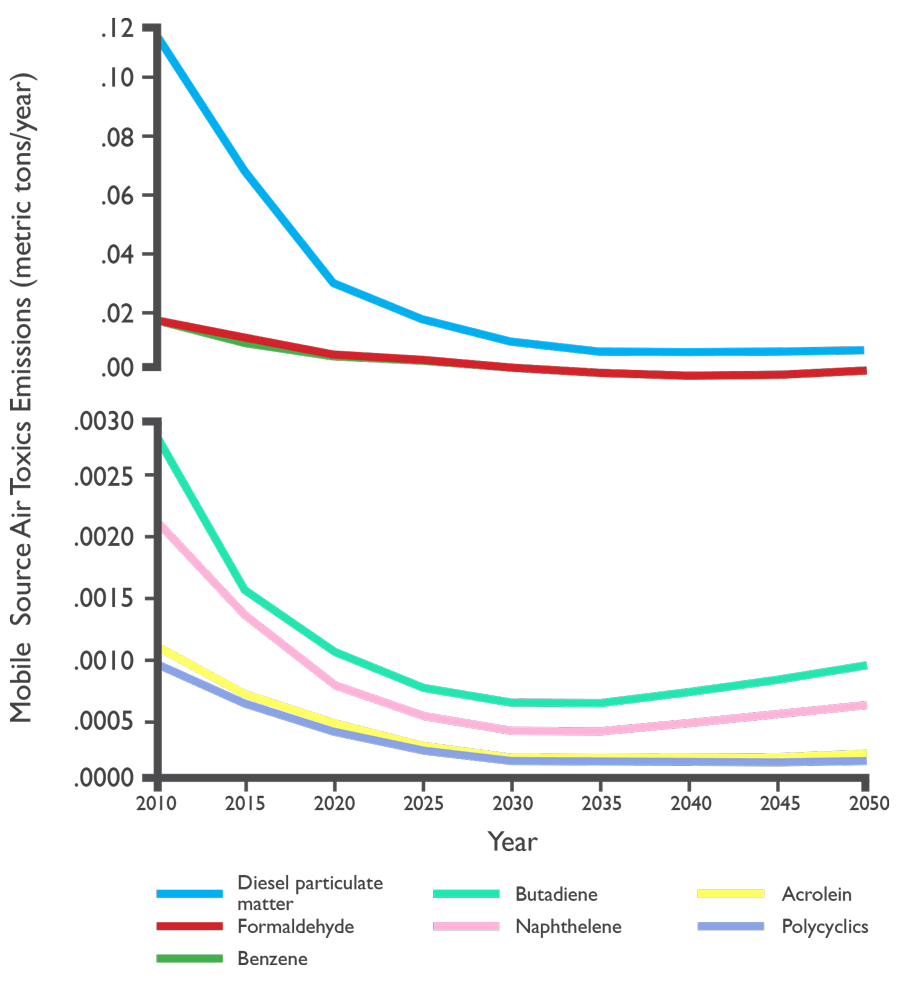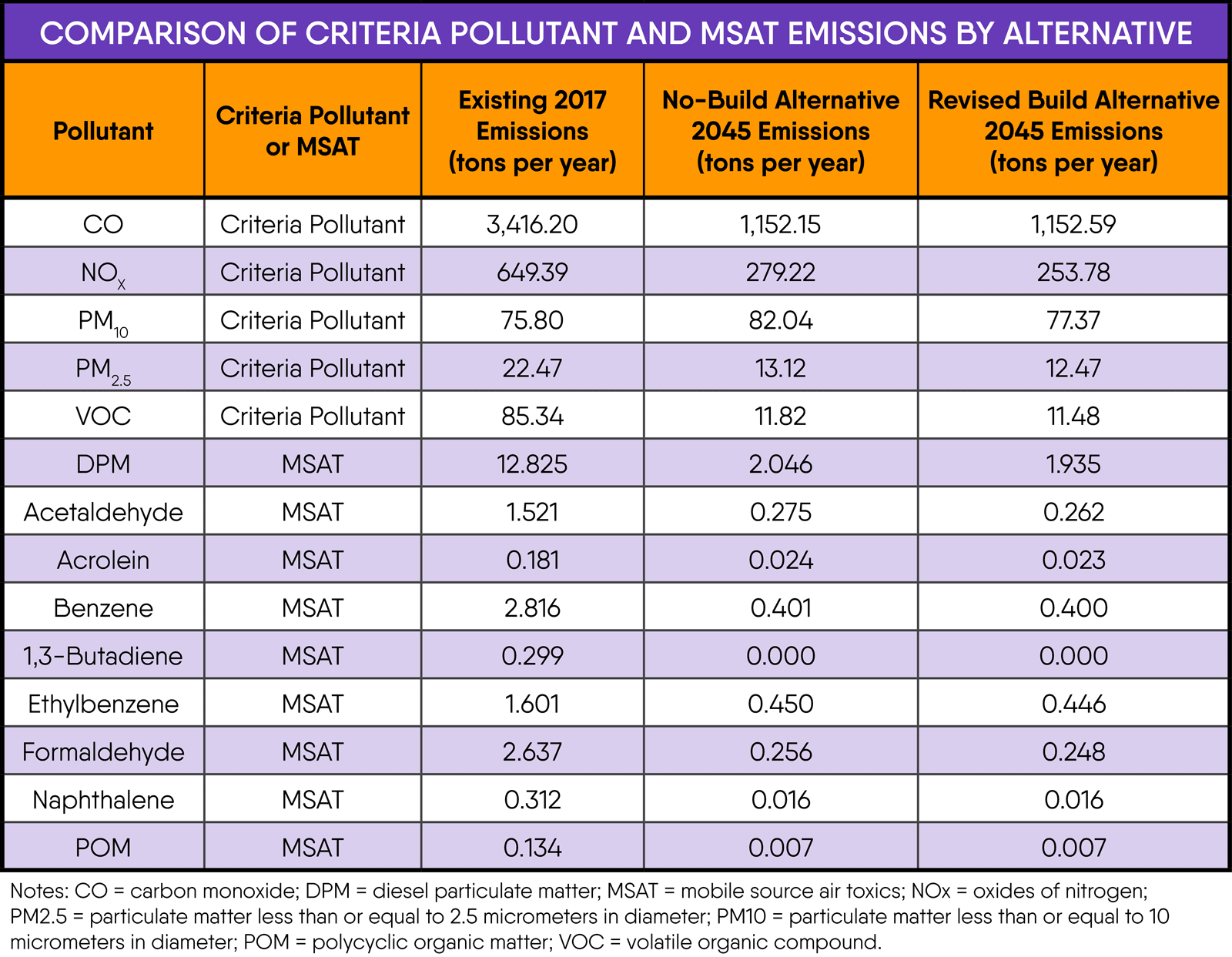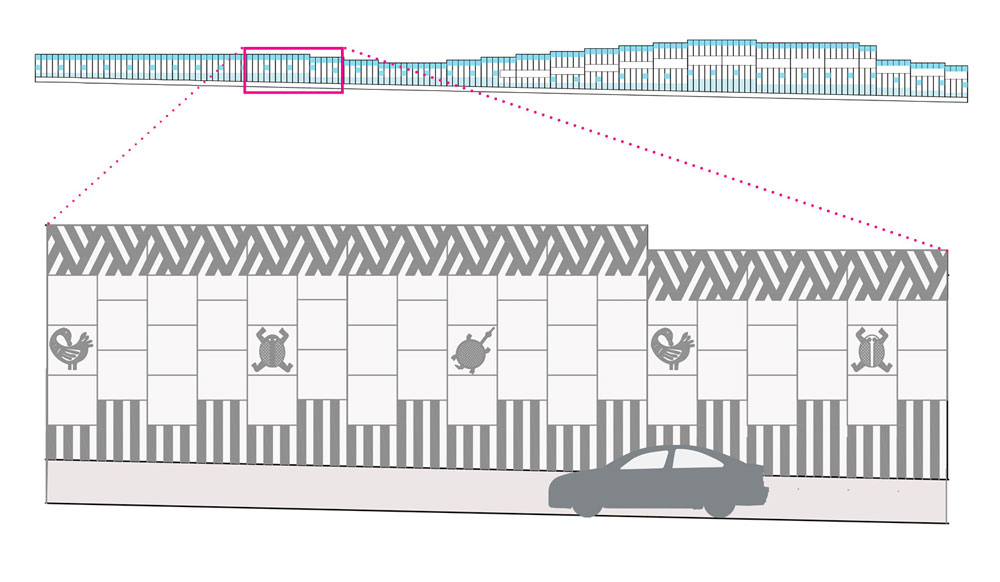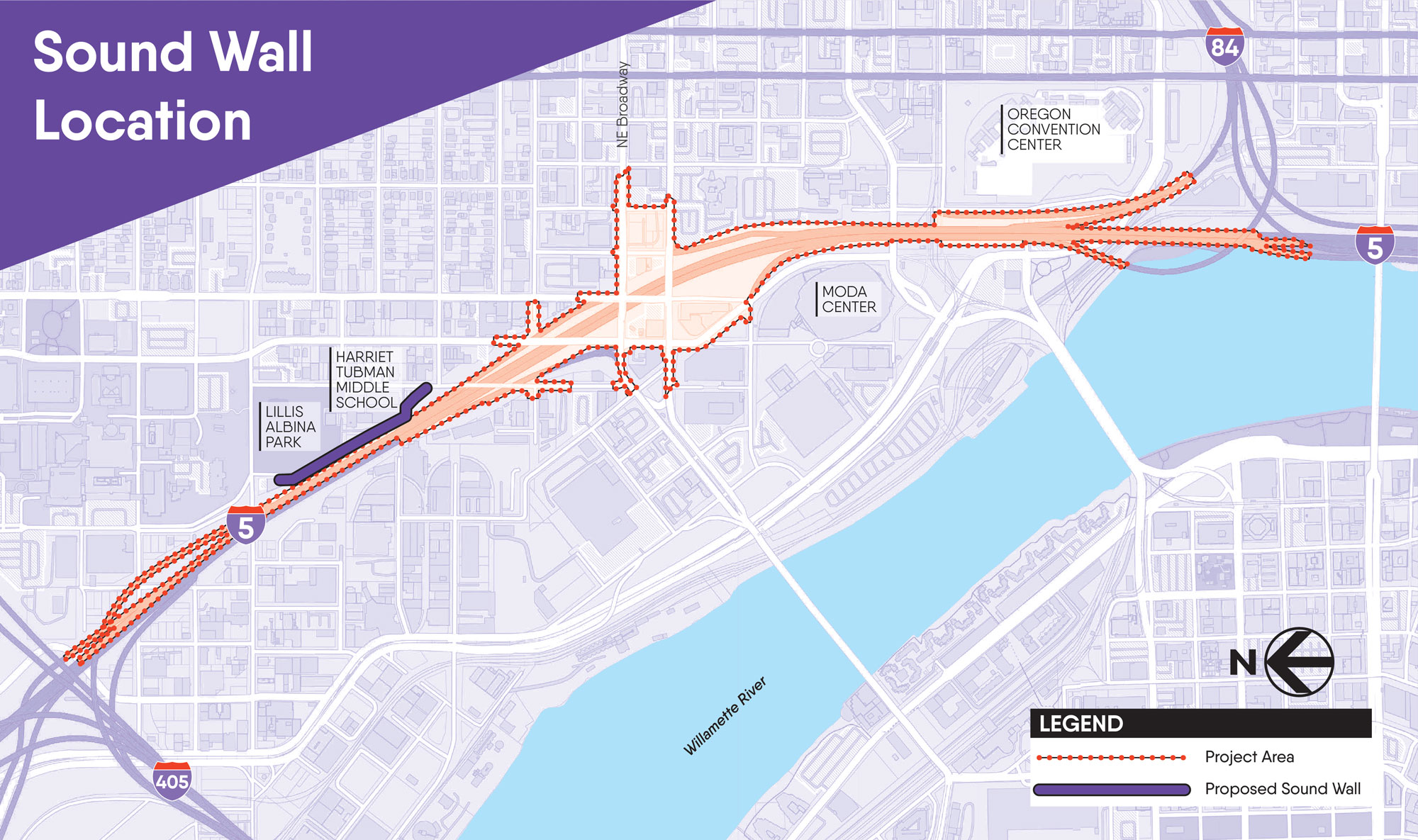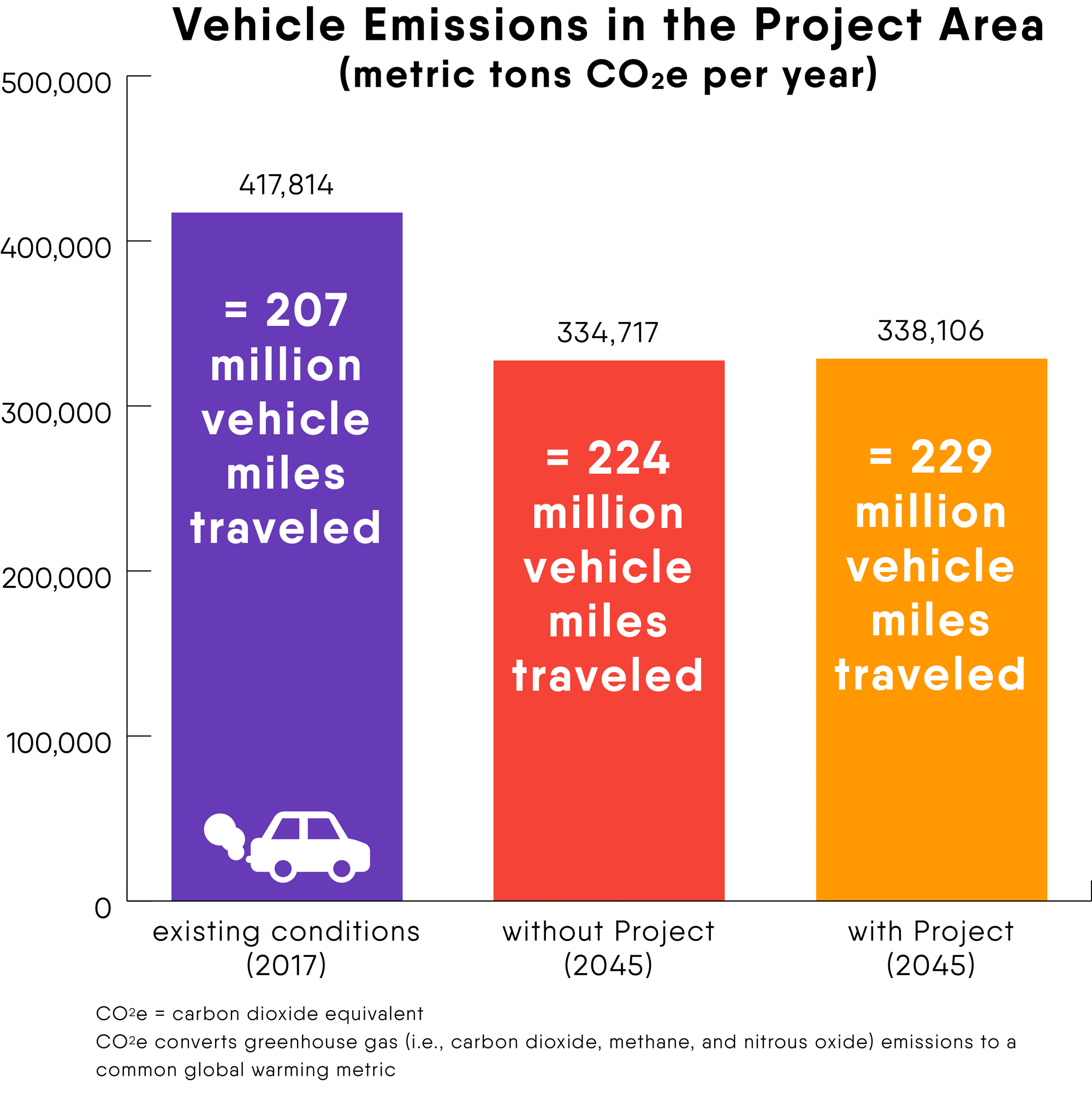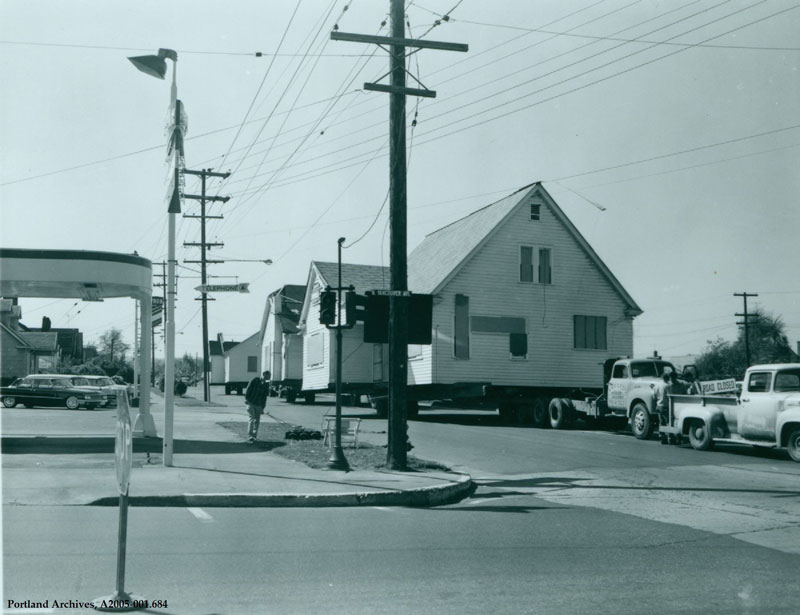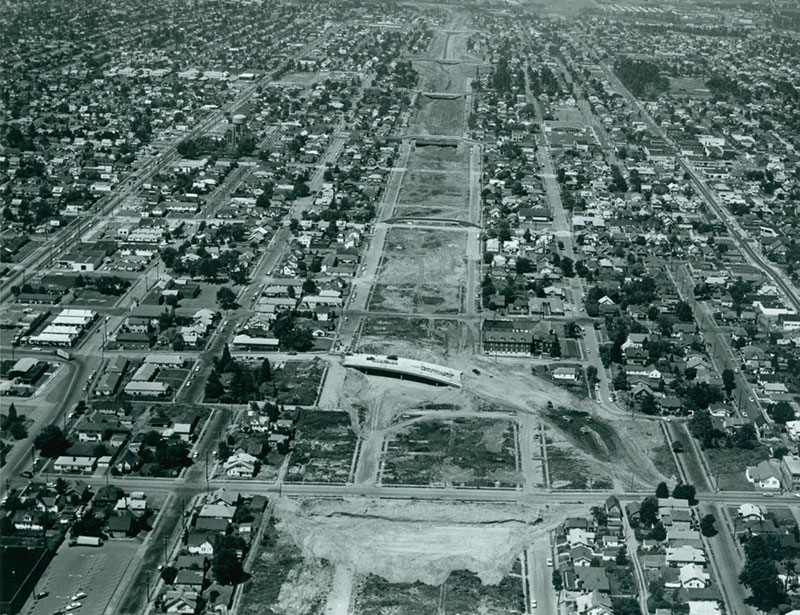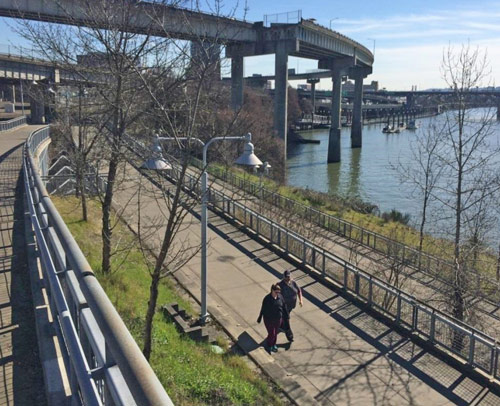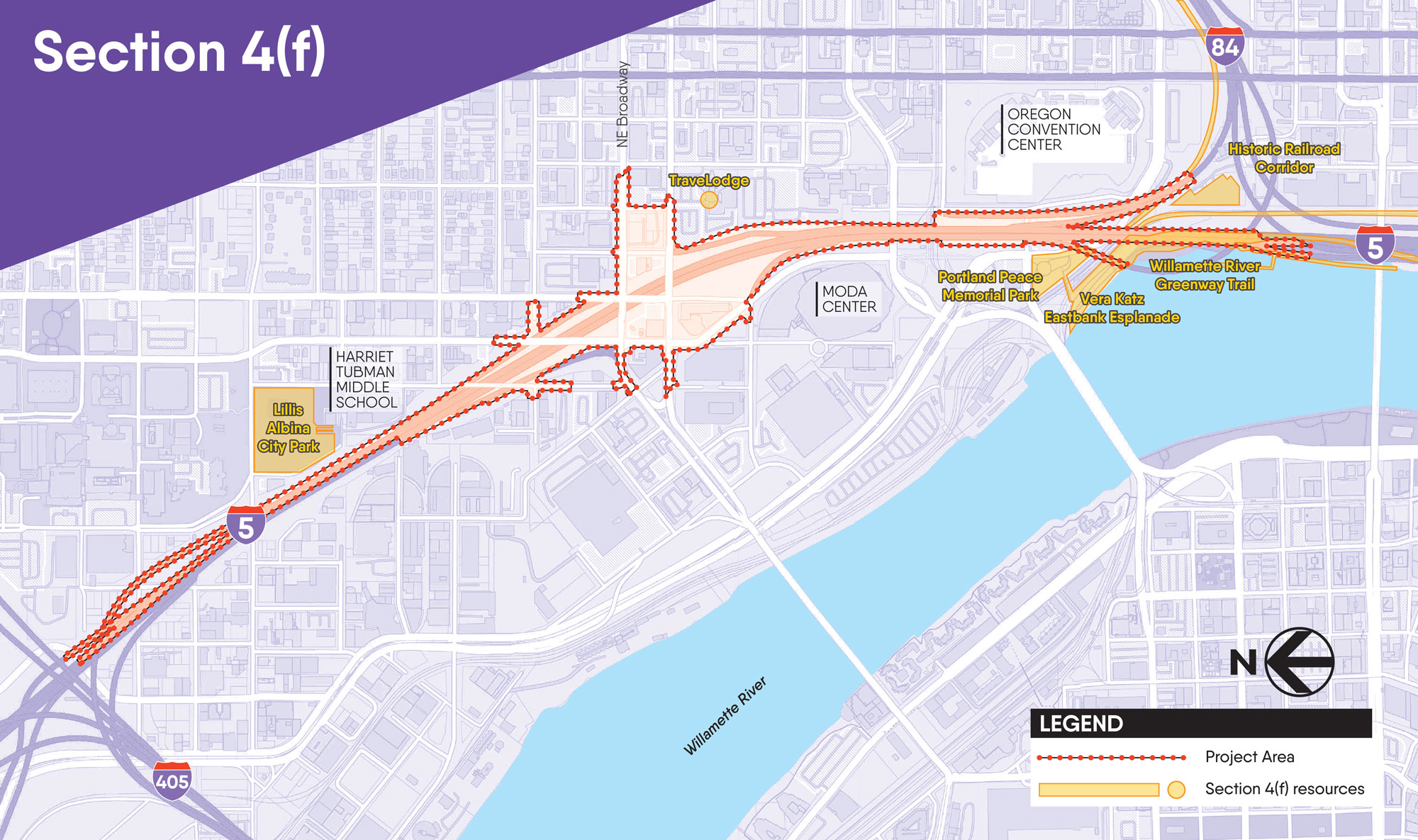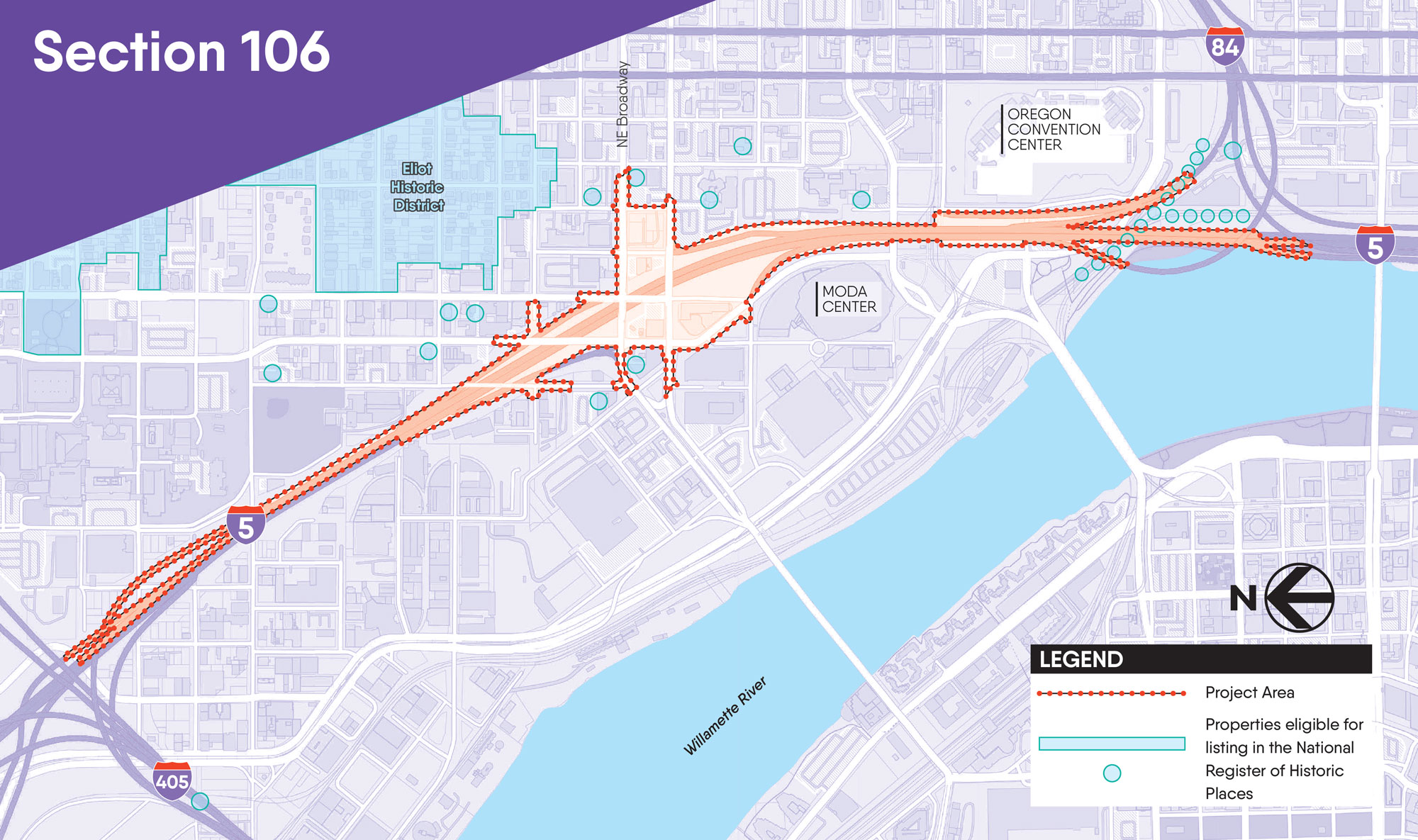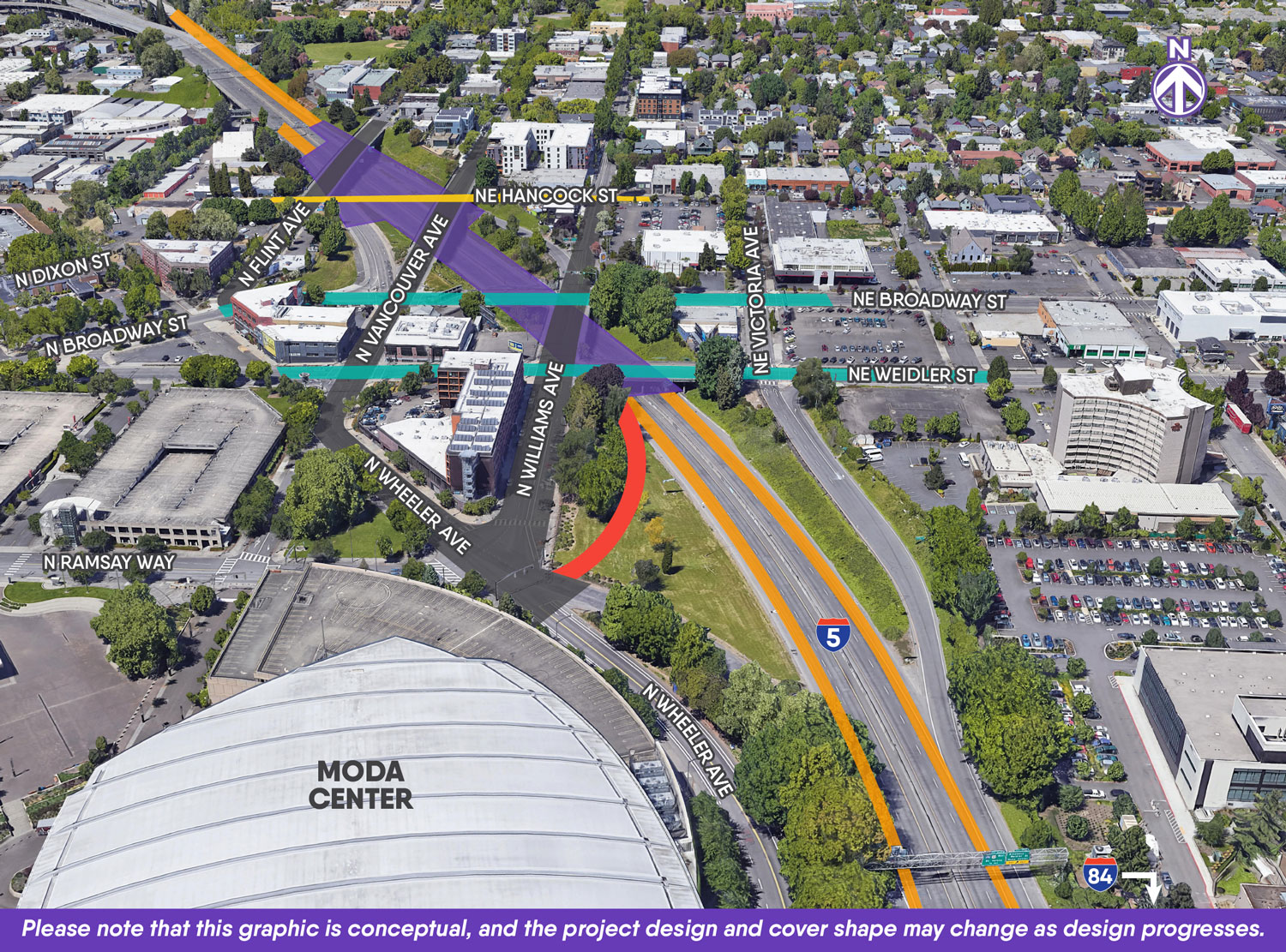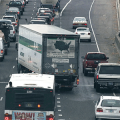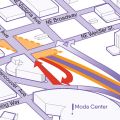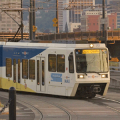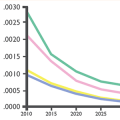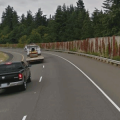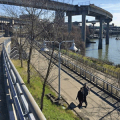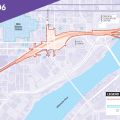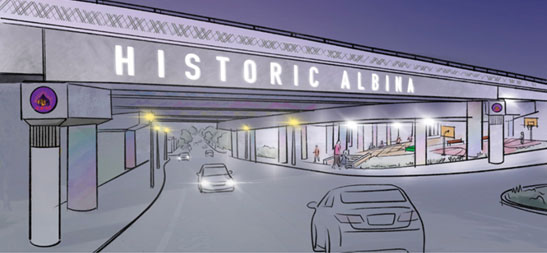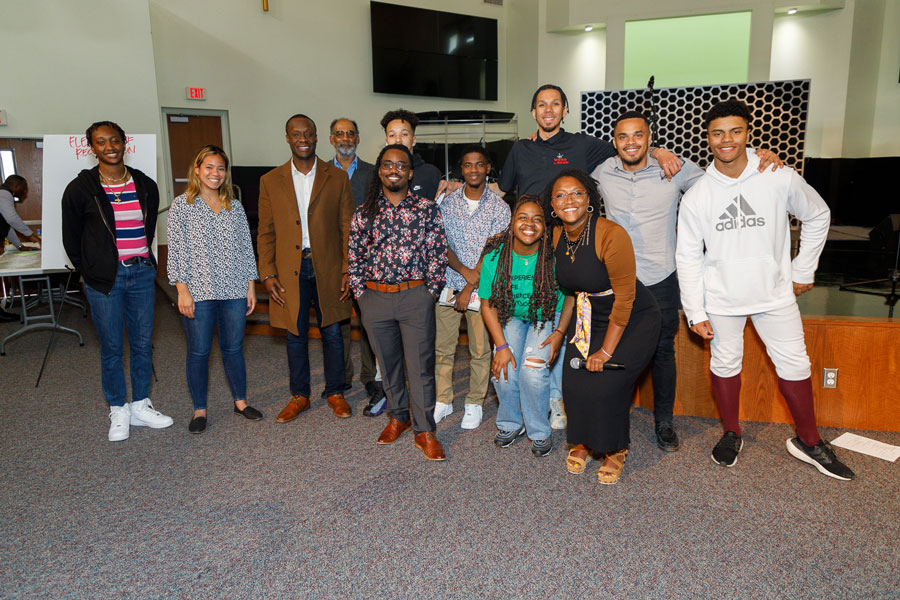Accessibilty and Language Options (Opens in new window.)
Stations
Project Purpose:
- The purpose of the Project is to improve the safety and operations on I-5 between Interstate 405 (I-405) and Interstate 84 (I-84), at the interchange of I-5 and N Broadway and NE Weidler Street (Broadway/Weidler interchange), and on adjacent surface streets in the vicinity of the Broadway/Weidler interchange.
In Support of This Purpose, The Project Would Also:
- Support improved local connectivity and multimodal access in the project area and between neighborhoods east and west of I-5.
- Complement the land use, urban design and transportation system envisioned for the planning districts of Lower Albina and Lloyd as articulated in the City of Portland’s adopted plans.
Project Need:
I-5 between I-84 and I-405 is the top traffic bottleneck in Oregon, and the 28th worst freight bottleneck in the nation. The project is needed to address the following:
- I-5 Safety
- I-5 Operations & Reliability
- Broadway/Weidler Interchange Operations
- Travel Reliability
Project History
The I-5 Rose Quarter Improvement Project has been part of regional transportation conversations since the 1980s. Learn more:
Key Project Features Include:
Highway Cover
A new cover over I-5, similar to a very wide bridge, that reconnects local streets and creates new community spaces on top for future development and economic opportunities.
Hancock Crossing
A new east-west roadway crossing over I-5 that reconnects Hancock Street across the highway, adding another crossing north of Broadway and Weidler.
Multimodal Local Street Improvements
A variety of street improvements for people walking, biking and rolling.
Green Loop Connection
A link on Broadway and Weidler to the city’s Green Loop, a 6-mile bike and pedestrian path that allows people to travel safely through the heart of the city.
Auxiliary Lanes and Shoulders
Ramp-to-ramp connections, paired with wider shoulders, that improve safety and reduce congestion at the state’s top bottleneck.
I-5 Southbound Off-ramp Relocation
Relocation of the I-5 southbound off-ramp from Vancouver/Broadway to the south, connecting with N Wheeler Avenue.
Learn More:
National Environmental Policy Act
The project is following the requirements of the National Environmental Policy Act (NEPA), which is a federal law requiring agencies seeking federal funding or approval to assess the potential impacts of their project on the natural, human and built environments. NEPA environmental documents compare the effects of building a project with the effects of not building a project.
In 2019, ODOT and the Federal Highway Administration (FHWA) prepared an EA for the project, followed by a public comment period in accordance with NEPA. In 2020, ODOT and FHWA prepared a Revised EA that responded to public and agency comments on the 2019 EA, and FHWA signed a Finding of No Significant Impact (FONSI) for the project. In 2021, ODOT made design changes at the direction of the Oregon Transportation Commission based on an Independent Cover Assessment and community feedback. The FHWA determined that the design changes warranted additional review in accordance with NEPA, and rescinded the 2020 FONSI. As a result, ODOT incorporated the design changes into a Revised Build Alternative, and with FHWA, prepared the Supplemental EA to evaluate the benefits and impacts of the Revised Build Alternative compared to a No-Build Alternative.
The Design Changes
- Provide one larger and continuous highway cover that could support buildings up to three stories tall, and possibly up to six stories tall. The prior design featured two smaller covers that could not support buildings.
- Maintain the N Flint Avenue connection and reconnect N Hancock Street to NE Hancock Street over I-5. The prior design removed the N Flint Avenue connection over I-5.
- Relocate the I-5 southbound off-ramp at NE Broadway farther south to NE Wheeler Avenue near the Moda Center. The prior design maintained the I-5 southbound off-ramp in its existing location at the intersection of NE Broadway.
- Connect the City of Portland’s Green Loop for pedestrians and cyclists on Broadway and Weidler Streets. The prior design included a separated bicycle and pedestrian bridge referred to as the Clackamas bicycle and pedestrian bridge.
Supplemental EA Documents
- Executive Summary (PDF, 147 KB)
- Supplemental Environmental Assessment (PDF, 7.1 MB)
- Appendix A. Supplemental Environmental Technical Reports (PDF, 70 KB) + Show Reports
- Appendix B. Reasonably Foreseeable Future Actions (PDF, 467 KB)
- Appendix C. Section 106 Programmatic Agreement between FHWA, ODOT, and SHPO (PDF, 13.9 MB)
- Appendix D. Summary of Avoidance, Minimization, and Mitigation Measures (PDF, 346 KB)
- Appendix E. Figure Descriptions (PDF, 219 KB)
Key Environmental Study Findings
Short-Term Impacts During Construction
Learn how project construction will affect those accessing the project area, and what measures will be taken to reduce temporary construction impacts.
Transportation
Transportation Safety:
Review how the proposed project design is expected to improve safety for all travel modes on I-5 and local streets.
Traffic Operations:
Learn how motor vehicle traffic operations will be impacted both on I-5 and local streets.
Active Transportation:
Find out how movement for people walking, biking and rolling would generally improve with the project compared to without the project.
Transit:
Learn how the project impacts transit operations and ridership.
Air Quality
Read about the expected reductions in air toxins, emissions and pollutants over the next 25 years.
Noise
Gain an understanding of the project’s noise analysis and what design proposals are in place for sound walls in the project area.
Climate Change
Review the key climate change findings regarding greenhouse gas emissions.
Environmental Justice
Learn about Environmental Justice and the project’s commitment to Environmental Justice values.
Parks - Section 4(f)
The project area includes 4 Section 4(f) park resources and 15 Section 4(f) historic sites. Understand how the project will impact those resources and sites.
Historic Resources - Section 106
The project vicinity includes a historic district and historic properties. Learn how the project will impact those historic resources in the short term and the long term.
Review the information above and submit comments by midnight January 4, 2023.
Other Environmental Study Topics
The topics listed above received the most public interest to date. Other topic areas that can be found in the Supplemental EA include:
- Archaeological Resources (Section 3.4 of the Supplemental EA, Supplemental Technical Report.)
- Hazardous Materials (Section 3.7 of the Supplemental EA)
- Land Use (Section 3.8 of the Supplemental EA, Supplemental Technical Report.)
- Socioeconomics (Section 3.11 of the Supplemental EA, Supplemental Technical Report.)
- Water Resources (Section 3.15 of the Supplemental EA)
- Right of Way (Section 3.10 of the Supplemental EA, Supplemental Technical Report.)
- Utilities (Section 3.14 of the Supplemental EA)
You can read more about these topics in the project library at i5rosequarter.org/resources/library.
Elevating Community Voices Through:
Project Values
By centering restorative justice as one of the project’s primary values, ODOT is doing business differently by facilitating community involvement through informed project design and workforce opportunities for the Black community.
Advisory Committees
Two advisory committees oversee and provide direction for the project. All committee meetings are open to the public and welcome public comment.
- The Historic Albina Advisory Board (HAAB) elevates the voices in the Black community and ensures that the project outcomes reflect community interests and values.
- The Community Oversight Advisory Committee (COAC) works to ensure the construction contractor meets its workforce and project contracting goals with Disadvantaged Business Enterprises.
Online Design Surveys
We’re hosting a series of online design surveys to collect community feedback on designs that honor the historic Albina community and could be added to highly visible areas of the project infrastructure.
Collaborative Contracting
We’re reshaping the way we do business by taking a more collaborative approach to contracting work for the project and encouraging the participation of Disadvantaged Business Enterprises.
Other Ongoing Community Engagement Efforts Both Online and In-Person:
- Engagement with youth and students of color.
- Participation and sponsorships at community events.
- Incentivized engagement with community-based organizations.
- Open houses, public workshops and forums.
- Direct outreach to the faith community, local businesses, community leaders and elected officials.
How to Comment
Information is available in alternative formats upon request.
- You can help us respond to questions and concerns by being as specific as possible with your comments. This means including page numbers or citing specific parts of the EA document in your comment. Additional explanations, facts and references are also helpful, when appropriate. Specific interests, thoughts and concerns are more effective than broad statements and more likely to be used to improve the final documents and analyses.
- As a reminder, commenting on the Supplemental EA is not a vote on the project but an opportunity to provide decision-makers your input about the environmental analysis of the preferred design alternative.
There are several ways to submit a comment, and all comments received through these channels are viewed equally:
 Online Open House and Project Website
Online Open House and Project Website
Leave a comment in the form below or at i5RoseQuarter.org between November 15, 2022 and January 4, 2023.
 Email
Email
Send an email with "Supplemental EA public comment period" in the subject line to:
 Phone
Phone
Leave a recorded voicemail at this number:
(503) 470-3127
 By Mail
By Mail
Send a written comment to this address:
Project Manager
c/o I-5 Rose Quarter Improvement Project
888 SW 5th Ave. Suite 600
Portland, OR 97204
 Virtual Public Hearing
Virtual Public Hearing
Provide your verbal comments at the Virtual Public Hearing on Wednesday, December 14, 2022, from 5 to 7:30 p.m.
In an effort to promote equity and in line with the project values, the I-5 Rose Quarter Improvement Project will ask people who identify as Black and/or people with ties to the historic Albina neighborhood to speak first, after invited testimony.
Registration is now closed.
If you don't want to speak at the virtual public hearing, you can watch it live on YouTube.
Printed Copy
View a printed copy of the document at the Multnomah County Library Albina branch:
216 NE Knott St.
Portland, OR 97212
What's Next?
The FHWA will consider all public comments received on the Supplemental EA before making a decision on the project. The decision document and records of public comments are expected to be available on the project website in early 2023. Pending the FHWA’s decision, construction on the project could begin in late 2023. We'll continue to engage the community as the project progresses.
Comment Form
Thank you again for participating in this online open house.
To learn more about the project, visit i5RoseQuarter.org.

